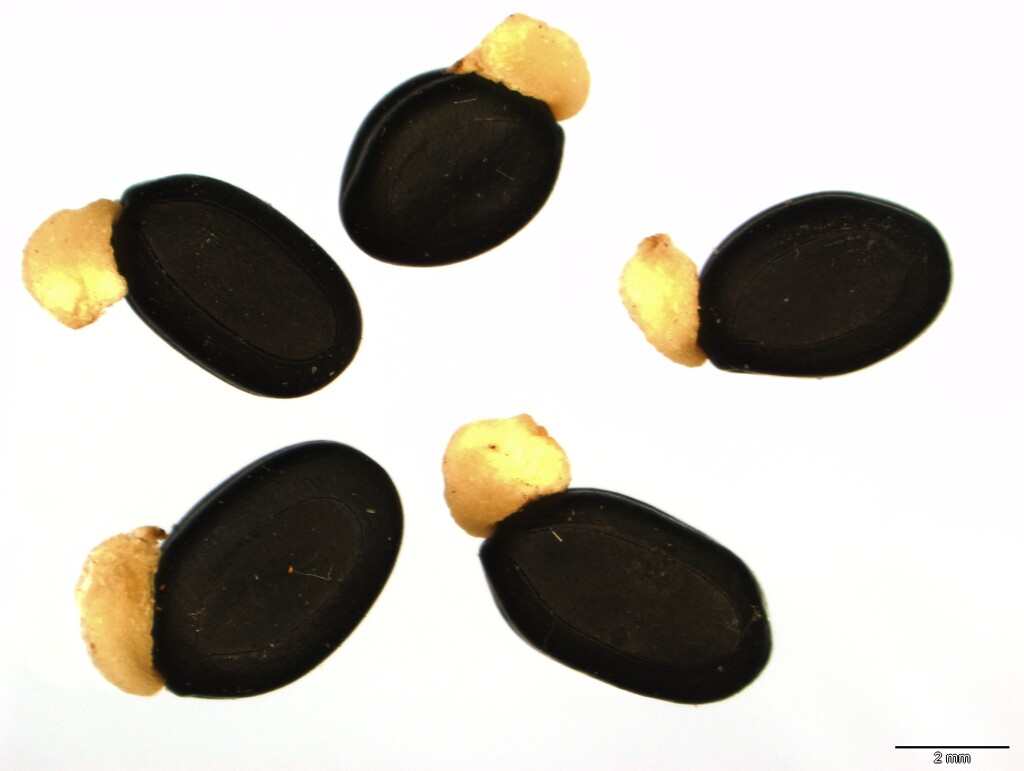Acacia obliquinervia
Tindale Mountain Hickory WattleShrub or tree, 1–15 m high; branchlets glabrous, commonly pruinose. Phyllodes obovate to narrowly oblanceolate, sometimes narrowly elliptic, 5–17 cm long, 1.5–5 cm wide, narrowed and often recurved near base, obtuse, grey-green to glaucescent, glabrous; pinnately veined, midrib prominent and situated towards the adaxial margin; gland 0–12 mm above pulvinus. Racemes sometimes in panicles, rachis 2–10 cm long, flexuose, glabrous; peduncles 1.5–5 mm long, stout, normally glabrous; heads globular, buds sometimes obloid, 20–35-flowered, bright golden or lemon-yellow. Flowers 5-merous; sepals united. Pods stalked, oblong, 4–15 cm long, 12–25 mm wide, slightly raised over seeds along midline, chartaceous to thinly coriaceous, slightly pruinose; seeds oblique, oblong-elliptic to ovate, 5–6 mm long, dull to slightly shiny, black; funicle thickly filiform, dark red-brown to black (dry), arillate. Flowers Aug.–Nov.
GipP, Gold, CVU, GGr, NIS, EGL, EGU, HSF, HNF, Strz, MonT, HFE, VAlp. Also NSW, ACT. Widespread and common in montane forests and woodlands at 500–1700 m altitude east of Melbourne and in the Grampians.
Formerly confused with A. falciformis which is distinguished by its creamy-yellow heads, normally golden puberulous peduncles and raceme axes, and phyllodes with a fine oblique vein from the gland to the midrib. Short phyllode forms may resemble A. caerulescens or A. penninervis, both of which also possess an oblique vein from the gland to the midrib. Sometimes superficially resembling A. pycnantha which is distinguished by its larger, 40–80-flowered heads, narrower pods (5–7 mm wide), and green phyllodes with a more or less central midrib.
Entwisle, T.J.; Maslin, B.R.; Cowan, R.S.; Court, A.B. (1996). Mimosaceae. In: Walsh, N.G.; Entwisle, T.J., Flora of Victoria Vol. 3, Dicotyledons Winteraceae to Myrtaceae, pp. 585–658. Inkata Press, Melbourne.
 Spinning
Spinning

